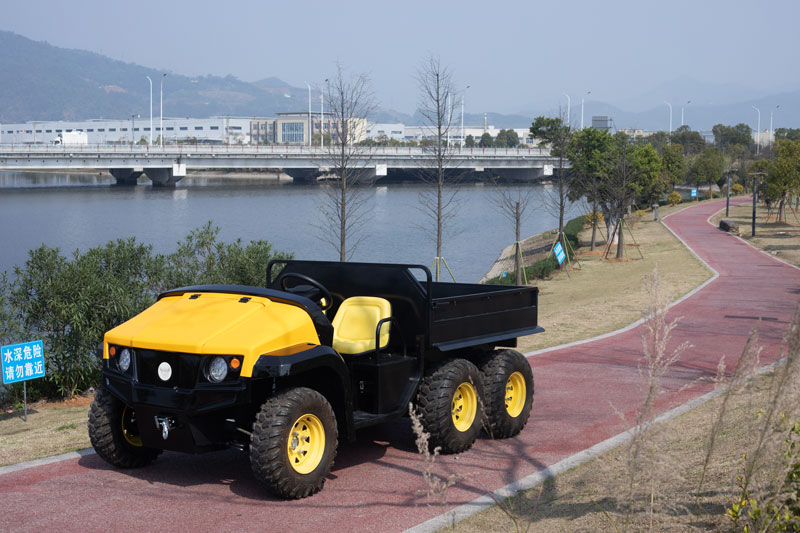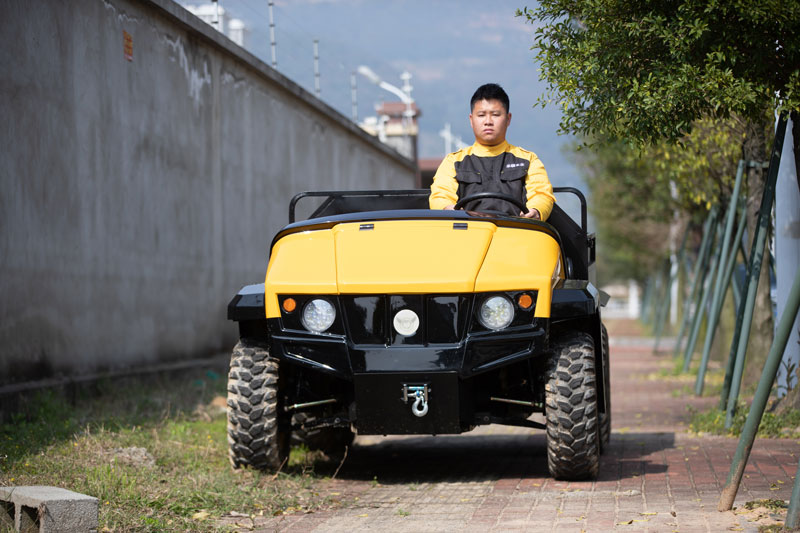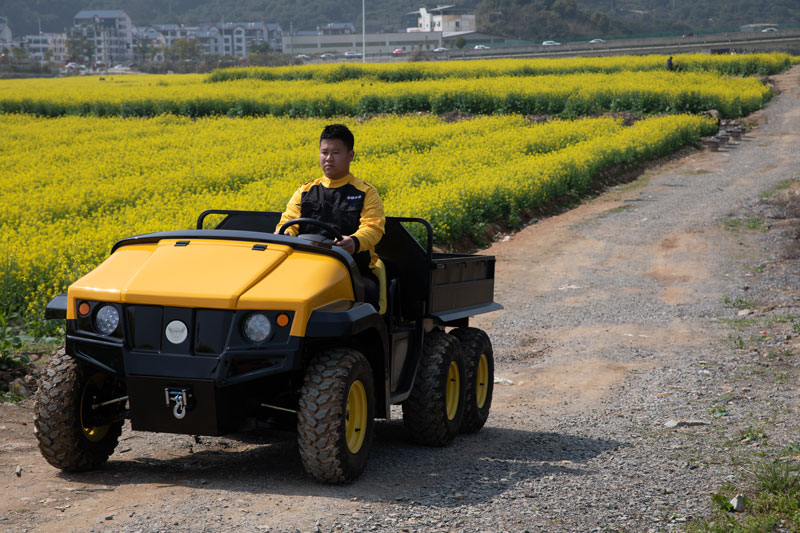The wide application of electric multi-purpose vehicle (UTV) in various industries makes its design and performance parameters become the focus of attention. The axle speed ratio is one of the key parameters to measure the performance of electric UTV. By changing the axle speed ratio of the transmission system, the performance of the vehicle can be optimized under different working conditions. This paper will analyze in detail the axial speed ratio 1:15 of our six-wheel electric UTV MIJIE18-E, and discuss its performance in different application scenarios.


Definition and significance of axial speed ratio
Axle speed ratio refers to the ratio of motor speed to axle speed. For MIJIE18-E, the axial speed ratio is 1:15, which means that the motor speed is 15 times the speed of the wheel shaft. This design can effectively amplify the torque output of the motor, so that the vehicle can maintain strong traction under high load and complex terrain conditions.
Optimize power output
MIJIE18-E is equipped with two 72V 5KW AC motors and two Curtis controllers to provide stable and powerful power output. The 1:15 axle-speed ratio gives the vehicle a maximum torque of 78.9NM. High torque output is particularly important for UTV performance under high load conditions such as heavy transport, towing and climbing. The climb of up to 38% also confirms this, whether in farmland, mining or rugged mountains, can be easily handled.
Load and climbing performance
The full load capacity of MIJIE18-E reaches 1000KG, which is very suitable for the transportation needs of various materials and equipment. The design of 1:15 axle speed ratio greatly improves the starting and climbing ability of the vehicle at full load. Through the amplification of torque, the vehicle still maintains good performance under heavy load and large slope conditions. Specifically, in the mine environment, the heavy and complex terrain puts higher requirements on the power output of the vehicle, and the torque of 78.9NM combined with the axial speed ratio of 1:15 makes the MIJIE18-E have a strong load carrying and climbing ability.
Braking and safety
In addition to power output, braking performance is also an important indicator to measure the advantages and disadvantages of electric UTV. The braking distance of the MIJIE18-E is 9.64 meters when empty and 13.89 meters when loaded. These performance indicators show that the vehicle can come to a quick and safe stop in an emergency. The design of the 1:15 axle ratio also plays a crucial role here, not only providing sufficient driving force under heavy loads, but also ensuring the effectiveness of the braking system and improving overall driving safety.
Application areas and customization
The wide application areas of MIJIE18-E include agriculture, industry, mining and leisure tourism. Due to its superior power and load performance, it can adapt to a variety of complex working environments. The manufacturer also provides private customization services, which can be adjusted according to the needs of different industries. For example, agricultural users may need higher torque to drive farm tools, while industrial users may need higher speed to improve work efficiency. These customization options greatly expand the application range of MIJIE18-E, making it more competitive in the market.


conclusion
The axle speed ratio is one of the key parameters affecting the overall performance of an electric UTV, and by analyzing the 1:15 axle speed ratio of MIJIE18-E, we understand how this design optimizes power output, improves load and climbing ability, and ensures braking safety. Axial ratio is not only the embodiment of performance, but also an important means to meet the needs of various applications. With its superior axle ratio design and customization options, MIJIE18-E offers strong application potential for various industries.
Post time: Jul-15-2024

